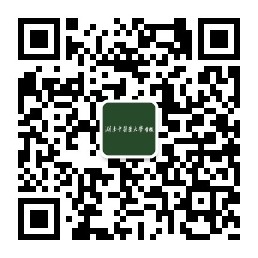| 引用本文: |
张娟, 段美志, 邓超, 刘胜明, 南俊英, 何瑛, 王应军, 薛永红.刮痧联合四海之腧取穴针刺法治疗中风后肩手综合征的临床观察[J].湖南中医药大学学报,2025,45(4):674-679[点击复制] |
|
| |
|
|
| 本文已被:浏览 8次 下载 3次 |
| 刮痧联合四海之腧取穴针刺法治疗中风后肩手综合征的临床观察 |
| 张娟,段美志,邓超,刘胜明,南俊英,何瑛,王应军,薛永红 |
| (宁乡市中医医院针灸康复科, 湖南 长沙 410600;宁乡市中医医院神经医学科, 湖南 长沙 410600) |
| 摘要: |
| 目的 观察刮痧联合四海之腧取穴针刺法治疗中风后肩手综合征的临床疗效。方法 选取来自宁乡市中医医院针灸康复科就诊的60例中风后肩手综合征患者,随机分为对照组和治疗组,每组30例。对照组采用四海之腧取穴针刺法治疗,治疗组在对照组的基础上结合刮痧治疗。比较治疗前后两组患者Fugl-Meyer运动功能评定量表上肢部分(U-FMA)、疼痛程度视觉模拟评分(VAS)、改良Barthel指数(MBI)、患手肿胀程度及凝血功能相关指标。结果 治疗后,两组患者的U-FMA评分、MBI评分均较治疗前升高(P<0.05),VAS、手背肿胀程度、纤维蛋白原(FIB)水平均较治疗前下降(P<0.05),两组患者凝血酶原时间(PT)与治疗前比较差异无统计学意义(P>0.05);治疗后,治疗组U-FMA 评分、MBI评分、PT均高于对照组(P<0.05),治疗组VAS对比对照组差异无统计学意义(P>0.05),治疗组手背肿胀程度、FIB水平均低于对照组(P<0.05)。结论 刮痧联合四海之腧取穴针刺法治疗中风后肩手综合征可改善患者的患肢功能,减轻疼痛,缓解临床症状,临床疗效优于单纯使用四海之腧取穴针刺法治疗。 |
| 关键词: 中风 肩手综合征 四海之腧取穴法 刮痧 U-FMA评分 VAS MBI评分 凝血功能 |
| DOI:10.3969/j.issn.1674-070X.2025.04.013 |
| 投稿时间:2024-12-17 |
| 基金项目:长沙市卫生健康委员会一般课题(KJ-B2023112);湖南省卫生健康委员会一般指导课题(D202303070114)。 |
|
| Clinical observation of guasha combined with acupuncture at points corresponding to the four seas for post-stroke shoulder-hand syndrome |
| ZHANG Juan, DUAN Meizhi, DENG Chao, LIU Shengming, NAN Junying, HE Ying, WANG Yingjun, XUE Yonghong |
| (Department of Acupuncture-moxibustion and Rehabilitation, Ningxiang Hospital of Traditional Chinese Medicine, Changsha, Hunan 410600, China;Department of Neurology, Ningxiang Hospital of Traditional Chinese Medicine, Changsha, Hunan 410600, China) |
| Abstract: |
| Objective To evaluate the clinical efficacy of guasha combined with acupuncture at points corresponding to the four seas for post-stroke shoulder-hand syndrome (SHS). Methods Sixty patients with post-stroke SHS in the Department of Acupuncture-moxibustion and Rehabilitation at Ningxiang Hospital of Traditional Chinese Medicine were randomly divided into the control group (n=30, treated with acupuncture at points corresponding to the four seas) and the treatment group (n=30, treated with guasha combined with acupuncture at points corresponding to the four seas). The following results were compared between the two groups of patients before and after treatment respectively: the upper Fugl-Meyer assessment (U-FMA) score, the visual analogue scale (VAS) score for pain intensity, the modified Barthel index (MBI) score, the swelling degree in the affected hand, and the coagulation function-related indicators. Results After the treatment, the scores of U-FMA and MBI in both groups were higher than those before treatment (P<0.05), while the VAS score, the swelling degree in the back of the hand, and the fibrinogen (FIB) levels were lower than those before treatment (P<0.05), and there was no statistically significant difference in prothrombin time (PT) within either group compared to before treatment (P>0.05). After the treatment, the scores of U-FMA and MBI, as well as the PT of the treatment group were higher than those of the control group (P<0.05), while the swelling degree in the back of the hand and the FIB levels of the treatment group were lower than those of the control group (P<0.05), and there was no statistically significant difference in VAS scores between the two groups (P>0.05). Conclusion The combination of guasha and acupuncture at points corresponding to the four seas can improve the function of the affected limb, alleviate pain, and relieve clinical symptoms in post-stroke SHS patients, with a better clinical efficacy than employing the latter therapy alone. |
| Key words: stroke shoulder-hand syndrome selection of the points corresponding to the four seas guasha U-FMA score VAS MBI score coagulation function |
|

二维码(扫一下试试看!) |
|
|
|
|




